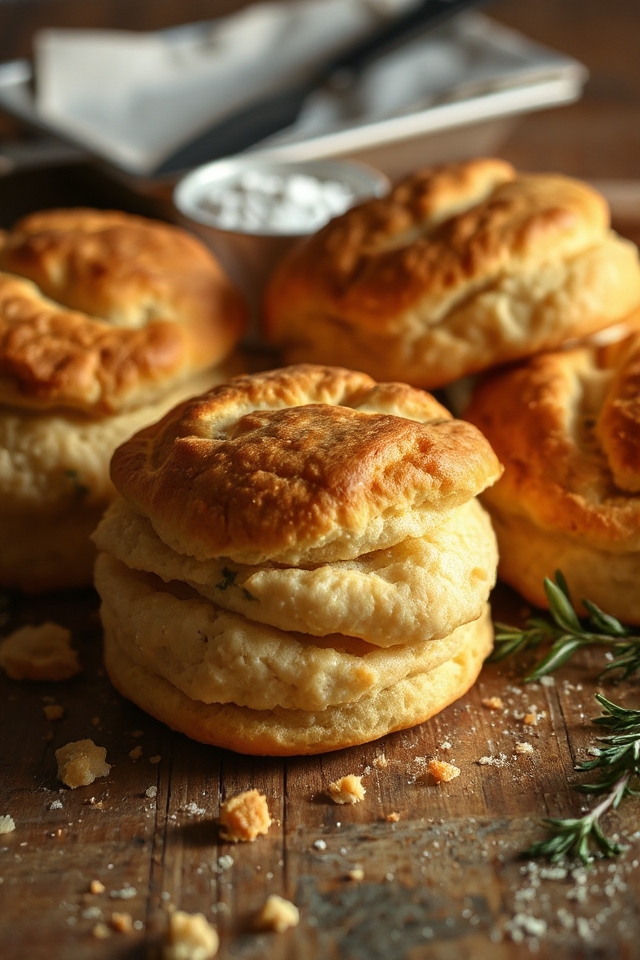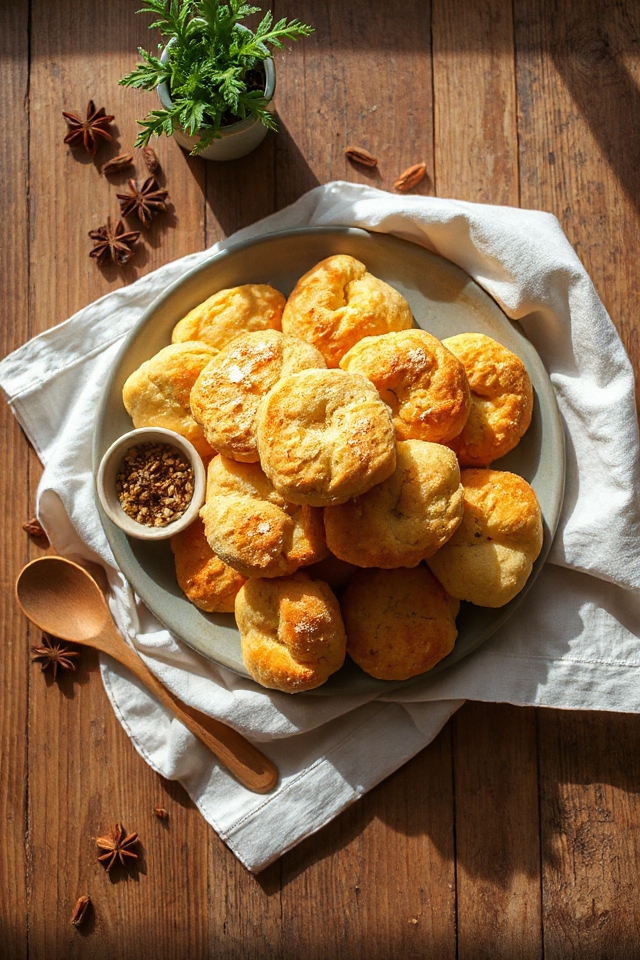Why You’ll Love This Biscuit Bread Recipe
You’re going to love this biscuit bread recipe for its simplicity and delightful flavor. I can’t tell you how many times I’ve whipped this up in a pinch, and it never fails to impress.
The combination of sweet and aromatic spices creates a cozy aroma that fills my kitchen. Plus, it’s so easy to make that even novice bakers can succeed!
I enjoy the warm, slightly crisp edges contrasted with a soft center. Whether you’re serving it at breakfast or as a snack, it’s a crowd-pleaser. Trust me, once you try it, you’ll want to make it again and again!
Ingredients of Biscuit Bread
When it comes to making delicious biscuit bread, the ingredients are the star of the show. You don’t need a ton of fancy stuff to whip up this delightful treat. In fact, many of these ingredients might already be sitting in your pantry, just waiting to be transformed into something magical.
So, let’s gather up what you’ll need for this simple yet scrumptious recipe.
Here’s the rundown of ingredients you’ll need to make biscuit bread:
- 4 ounces self-raising flour
- 2 eggs
- 1 teaspoon crushed anise seed
- 4 ounces sugar
- 1/2 teaspoon coriander
Now, let’s talk a bit about these ingredients. First off, self-raising flour is a game-changer because it already has baking powder mixed in. This means you won’t have to stress about measuring out leavening agents separately – less math, more baking joy.
And those spices? Oh, they’re not just for show. The anise seed adds a lovely hint of licorice flavor that really makes the biscuits sing, while coriander brings a warm, earthy note. If you’re not a fan of either, feel free to experiment. Maybe swap in cinnamon or nutmeg for a twist.
The beauty of baking is that it’s all about personal taste, so don’t be afraid to make it your own. Just remember, the key is to keep things simple, and you’re on your way to a delicious batch of biscuit bread.
How to Make Biscuit Bread

To make your delightful biscuit bread, start by grabbing a mixing bowl – it’s time to whip up some baking magic. First, take 4 ounces of self-raising flour and sift it into that bowl. This step is essential because it helps aerate the flour, giving your biscuits that light, fluffy texture we all crave.
Next, in another bowl, beat together 4 ounces of sugar and 2 eggs. You want to mix them until they’re nice and creamy, and the sugar is well incorporated. Just imagine that sweet, sugary goodness blending together. It’s like a sweet symphony in your kitchen.
Once you’ve got that creamy mixture, it’s time for the flour to make its grand entrance. Gently fold the sifted flour into the egg and sugar mix, stirring until the batter comes together. It might look a bit lumpy, but don’t stress. That’s just part of the charm.
Now, add in 1 teaspoon of crushed anise seed and 1/2 teaspoon of coriander for those warm, aromatic notes that will make your biscuit bread truly special. Stir everything until combined, and voilà! You’ve got yourself a lovely batter.
Now comes the fun part. Preheat your oven to 350°F (or Mark 4, if you’re feeling fancy) and get a greased baking tray ready. Using a teaspoon, drop spoonfuls of that delicious batter onto the tray, spacing them out a bit because they’ll spread while baking.
Pop them into the oven for about 10 to 15 minutes. Keep an eye on them; you want to catch them just as they start to brown around the edges. The moment you see that golden hue, take them out and flip them over with a knife or egg slicer.
Just a few more minutes back in the oven will harden them up, giving you a perfect biscuit bread that’s crispy on the outside and soft on the inside. And there you have it, a batch of biscuit bread that might just disappear faster than you can say “delicious.” Enjoy!
Biscuit Bread Substitutions & Variations
While exploring the world of biscuit bread, I’ve discovered that there are plenty of substitutions and variations to make this recipe your own.
For a gluten-free option, I love using gluten-free flour instead of self-raising flour. You can also swap out the sugar for honey or maple syrup for a different sweetness.
If you want a savory twist, try adding herbs like rosemary or thyme instead of anise and coriander.
And don’t hesitate to experiment with add-ins like chocolate chips or nuts for added texture. The possibilities are endless, so have fun customizing your biscuit bread!
Additional Tips & Notes
Since baking can be a bit tricky, I recommend keeping an eye on your biscuit bread as it bakes.
Every oven is different, so the baking time might vary slightly. If you notice they’re browning too quickly, lower the temperature a bit.
Also, for added flavor, consider experimenting with spices beyond anise and coriander. I’ve had great results with cinnamon or nutmeg.
If you want a crunchier texture, leave them in a little longer after flipping.
Finally, store any leftovers in an airtight container to keep them fresh.
Happy baking, and enjoy your delicious biscuit bread!
